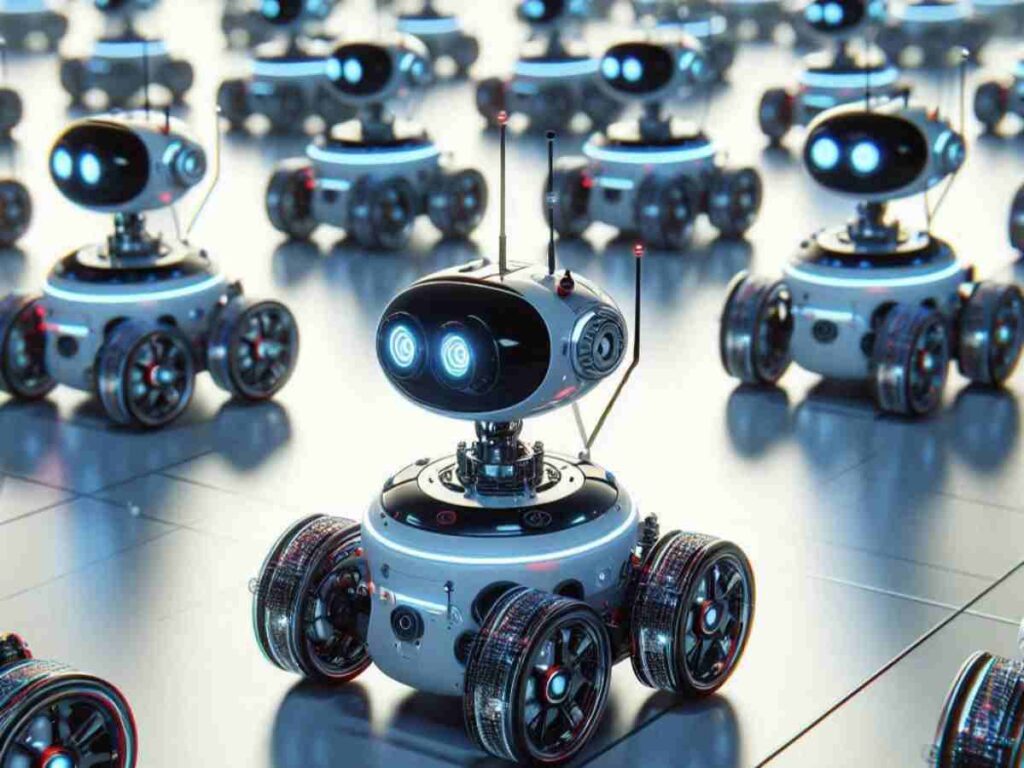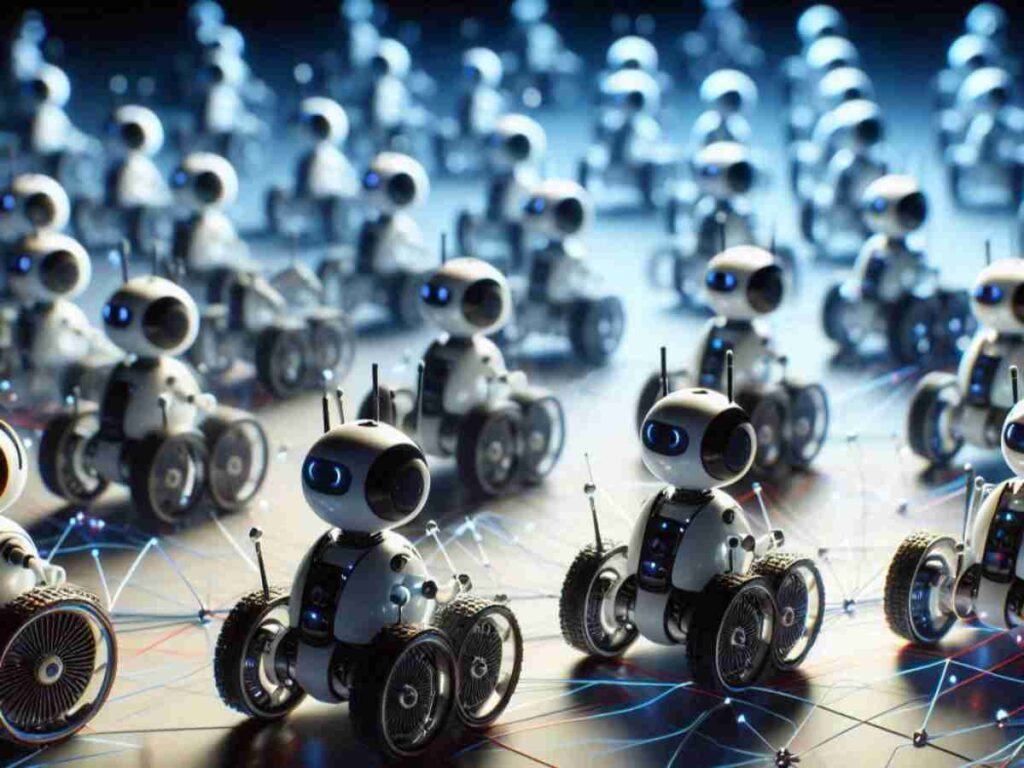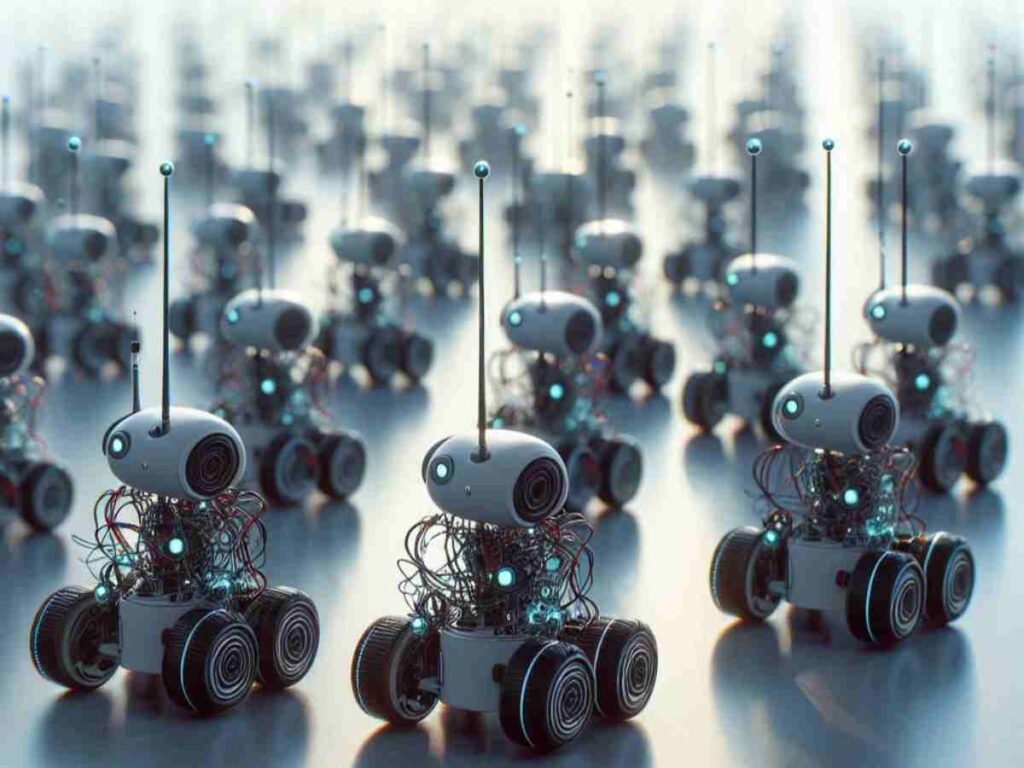In the rapidly evolving world of “Robotics“, a fascinating branch has emerged – “Swarm Robotics“. As the name suggests, it involves coordinating a group of simple robots to work together as a cohesive swarm. But what is the primary “purpose of Swarm Robotics“? Imagine a colony of ants collaborating to accomplish remarkable feats that would be impossible for a single ant. This analogy perfectly describes the essence of swarm robotics.

Table of Contents
What is Swarm Robotics?
“Swarm Robotics” is a captivating field that takes inspiration from the collective behavior of social insects like ants, bees, and termites. Imagine a group of simple robots, each with limited capabilities, but when they work together as a coordinated swarm, they can accomplish remarkable feats. These swarms are decentralized, self-organized systems that leverage cooperation and collective intelligence.
What is the primary purpose of Swarm Robotics?

The primary “purpose of Swarm Robotics” is to harness the collective power of simple robots to tackle complex tasks that would be impossible for a single robot, no matter how sophisticated. Just like a colony of ants can accomplish remarkable feats through collaboration, a swarm of robots can achieve extraordinary results by working together.
Imagine a single robot tasked with exploring a vast, hazardous area – its limited capabilities would quickly become a bottleneck. However, “Swarm Robotics” offers a ingenious solution. Each individual robot in the swarm may have modest abilities, but when they coordinate and cooperate, their combined efforts transcend their individual limitations.
Advantages of Swarm Robotics

Robust and fault-tolerant
If one robot fails, the swarm can continue functioning. “Swarm Robotics” offers a remarkable advantage – resilience. Unlike traditional robotic systems where the failure of a single unit could compromise the entire mission, a swarm is designed to be fault-tolerant.
Imagine you’re part of a search and rescue team, and one of the robots in the swarm malfunctions. In a conventional system, this could bring operations to a halt. However, with “Swarm Robotics”, the collective intelligence of the swarm allows the remaining robots to adapt and continue the mission seamlessly.
Flexible and adaptable
The swarm can reorganize and adjust to changes or obstacles. Flexibility is a hallmark of “Swarm Robotics”. These systems are inherently dynamic, capable of reorganizing and adjusting to changing environments or unexpected obstacles.
Like a flock of birds effortlessly navigating through turbulent air currents, a robotic swarm can reconfigure itself to overcome challenges.This adaptability is invaluable in scenarios such as disaster response, where conditions are unpredictable and constantly evolving.
Scalable
More robots can be added to the swarm as needed for larger tasks. Scalability is another key advantage of “Swarm Robotics”. Unlike traditional robotic systems with fixed capabilities, a swarm can grow or shrink in size based on the task at hand.
Success is not final, failure is not fatal: it is the courage to continue that counts.
Winston Churchill
In the context of swarm robotics, this scalability allows for tackling increasingly complex challenges by simply adding more robots to the swarm.
Cost-effective
Simple individual robots are generally cheaper than a single complex robot. While the collective capabilities of a swarm are impressive, the individual robots themselves are often relatively simple and inexpensive.
This cost-effectiveness is a significant advantage, making “Swarm Robotics” an attractive solution for applications where budget constraints are a concern. Instead of investing in a single, highly complex, and expensive robot, swarm robotics allows for the deployment of multiple, simpler, and more affordable units.
Final Thoughts
In summary, the primary “purpose of Swarm Robotics” is to harness the collective capabilities of simple robots through decentralized control and self-organization, enabling them to tackle complex tasks that would be impossible for a single robot. By working together as a cohesive swarm, these robots can transcend their individual limitations, much like a colony of ants accomplishing remarkable feats through cooperation.
The potential of “Swarm Robotics” to revolutionize various fields and solve challenging problems is truly exciting. From search and rescue operations in disaster-stricken areas to environmental monitoring and exploration of hazardous environments, swarm robotics offers innovative solutions.
The true delight is in the finding out rather than in the knowing.
Isaac Asimov
Swarm robotics embodies this spirit of exploration and discovery, paving the way for groundbreaking advancements in robotics and beyond.
Are you fascinated by the world of robotics but can’t find any way to begin your journey? Unlock the secrets of this cutting-edge field with our comprehensive guide, “How to Learn Robotics.” Imagine having the power to design, build, and program your very own robots, bringing your wildest ideas to life!









